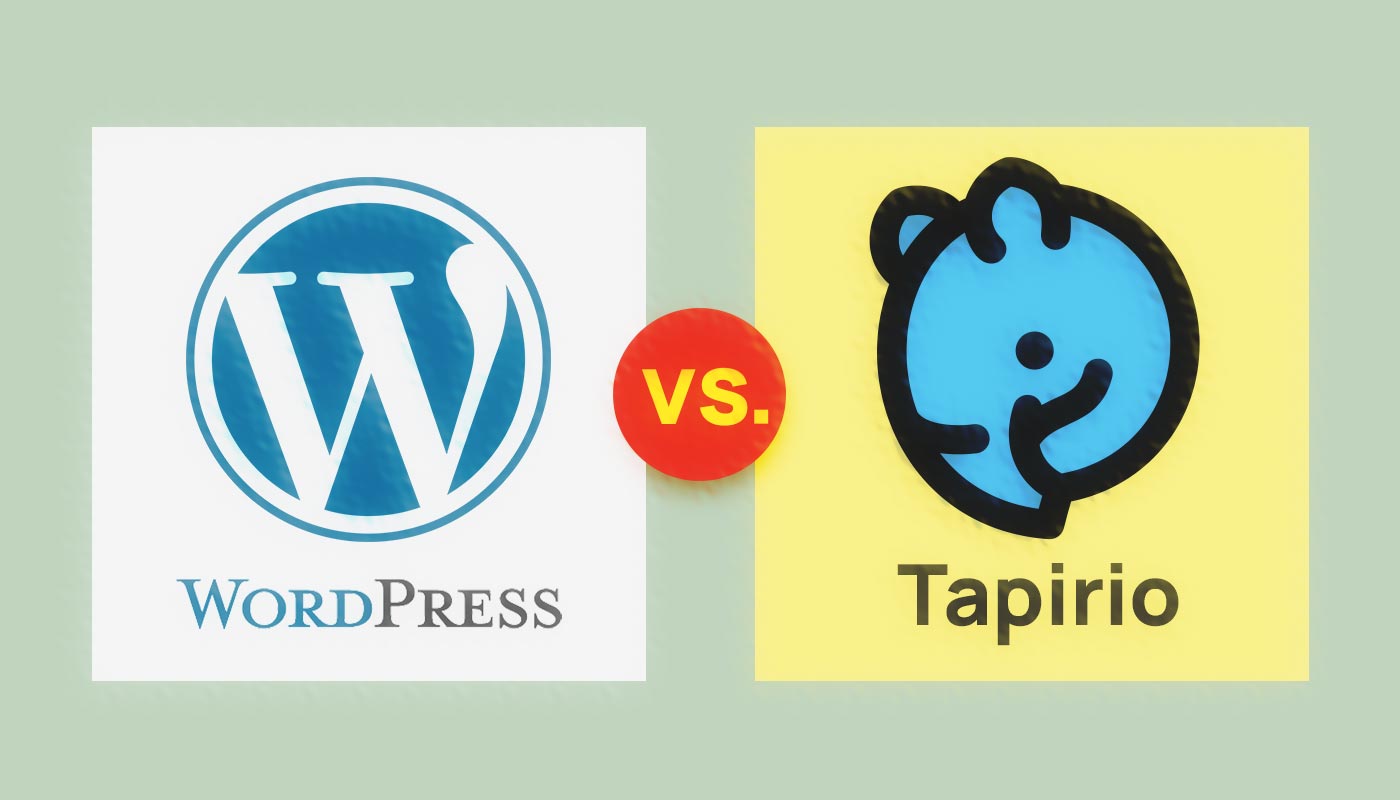
Why You Should Choose Tapirio Over WordPress
If you are looking to jump-start a new blog or a website, the most popular choice for the technology is, without a doubt, WordPress. Not everyone ends up using it, but many people at least entertain the idea. After all, WP offers a robust publishing system that comes with a massive repository of plugins that can satisfy your every need. Not to mention all of the free and for-sale design themes you can use.
“Should I Use WordPress Or Build From Scratch?” is a very popular question on Google search. It’s a valid idea to ponder. With the “Swiss army knife” (or kitchen sink) package comes a lot of baggage. The learning curve can be surprisingly steep with a solution like WordPress.
Building from scratch is often a vague starting point, especially if you are at the crossroads of web technologies. Database or not? PHP or Python? Statically generated or a single-page React app? It can quickly get overwhelming.
Disclaimer: if you would like to use Tapirio today, you need to have at least some level of familiarity with coding, specifically JavaScript. Also, you need to be friendly with the terminal app and the command line.
Here’s Why I Would Recommend Tapirio
-
Light-weight
The underlying stack is very light and swift. We based our server on ExpressJS (which is written in Node) that runs locally and on the server without taking up a lot of CPU or memory.
-
Easy installation
Clone the Git repo, launch your favorite code editor app, update the preferences file, install dependencies and you are good to go.
-
No database
It’s so much easier to deploy and migrate a solution that doesn’t rely upon a database. Tapirio uses Markdown format with extendable meta configuration in each blog article file. You can add a database if you want since there are no limits.
-
Insanely customizable (if you know some development)
You can modify the layout and each page’s logic by jumping into the templates or even the router file. There’s very little prescribing for how you should use Tapirio, unlike in WordPress, where you are quite constrained by “the loop” and the PHP baggage collected over the years.
-
JavaScript on the front-end and back-end
JavaScript, including CoffeeScript and Microsoft's TypeScript, is far and away the most popular language, with over 12 million developers using it worldwide. With Tapirio, you can use it to create user interface interaction in the browser, as well as modify the server logic. One language to take care of all the things!
What Using Tapirio Means To Us
I by no means want to bash WordPress simply to promote Tapirio, a platform I’m obviously privy to. On the contrary, I appreciate WordPress and use for various projects. There are certain advantages that more complex and mature systems have over the light-weight “build-it-yourself” boilerplate solutions. The point I’m making is that we, the people behind Tapirio, are creating of not having direct access to a small amount of code that has several basic foundational things. Upon them, we can build quick static sites and blogs and move fast with design customizations and code maintenance.
How You Can Start Using Tapirio Today
Go to our Github repo and fork or clone a version of Tapirio for your own experimentation. Try building a simple blog or a static site. We will share instructions on how to deploy Tapirio sites to Heroku and Linode in the future.
Let us know if you need any support, would like to contribute, or have ideas. Tapirio is a free, open-source project, and we welcome you to try, participate, and contribute.
Tags: